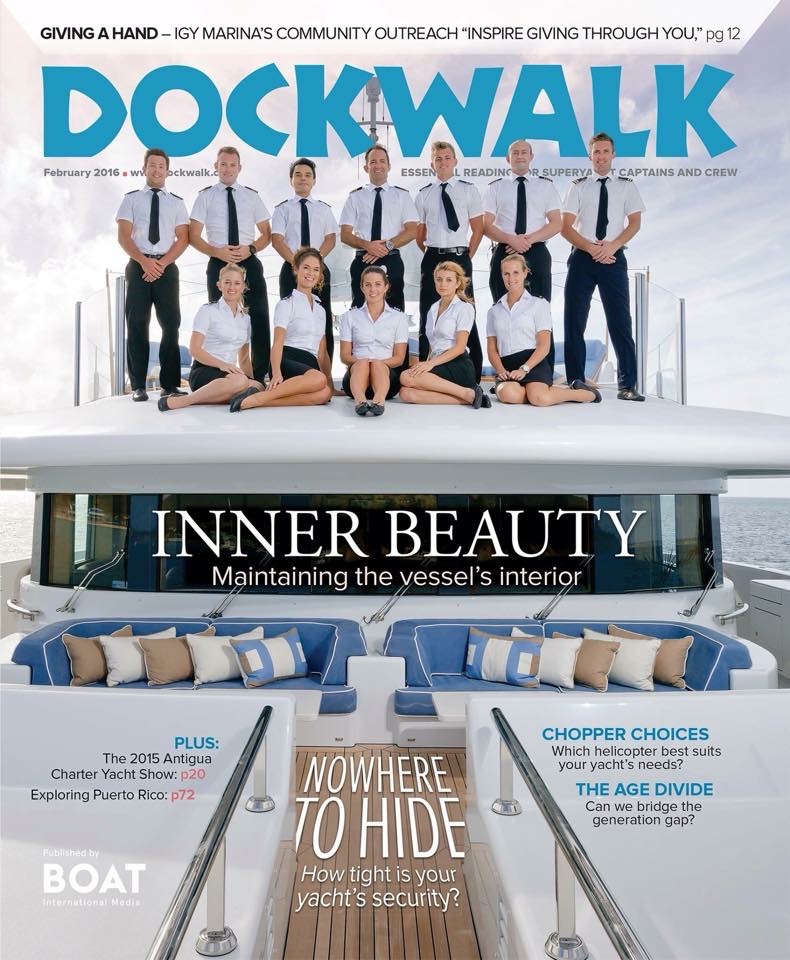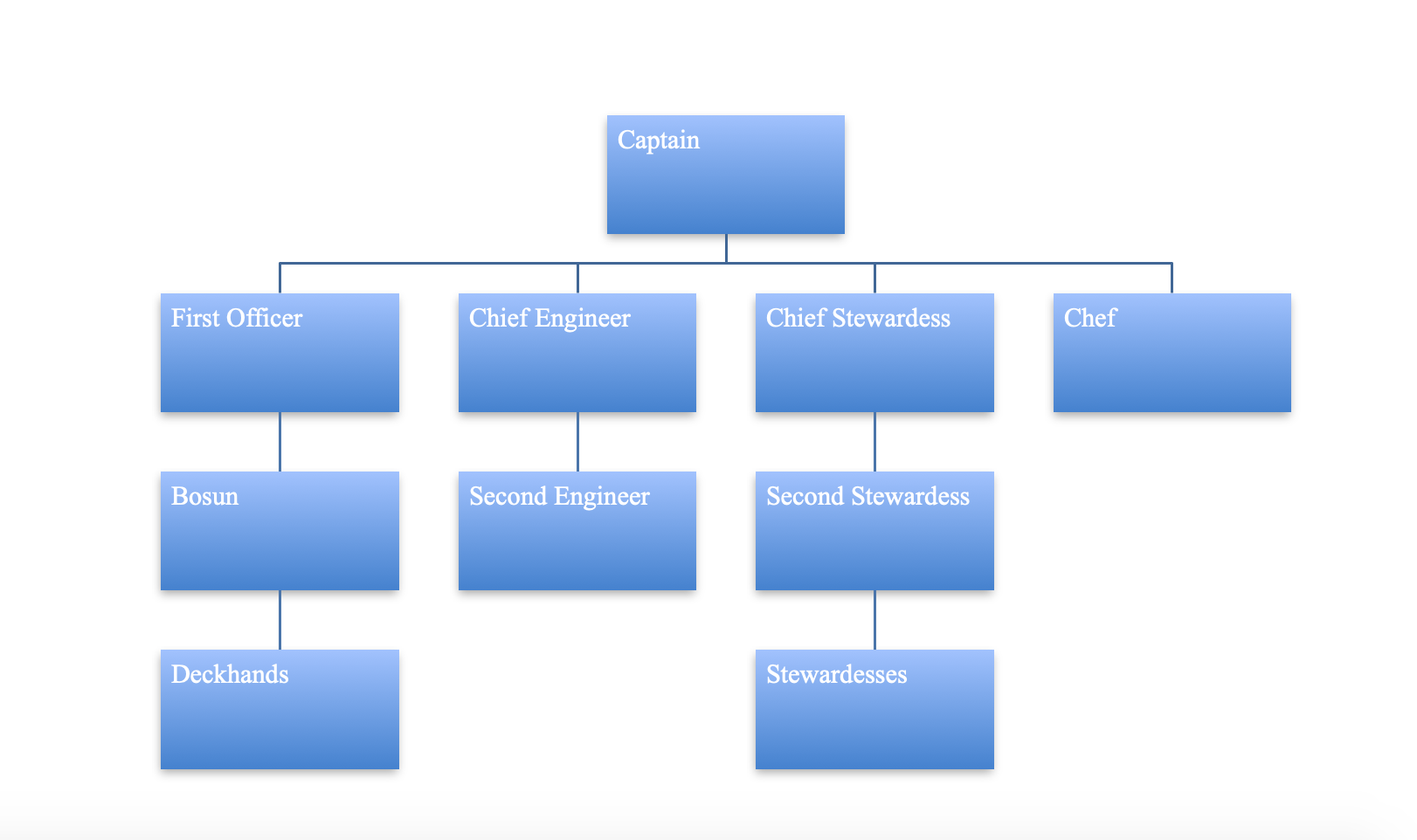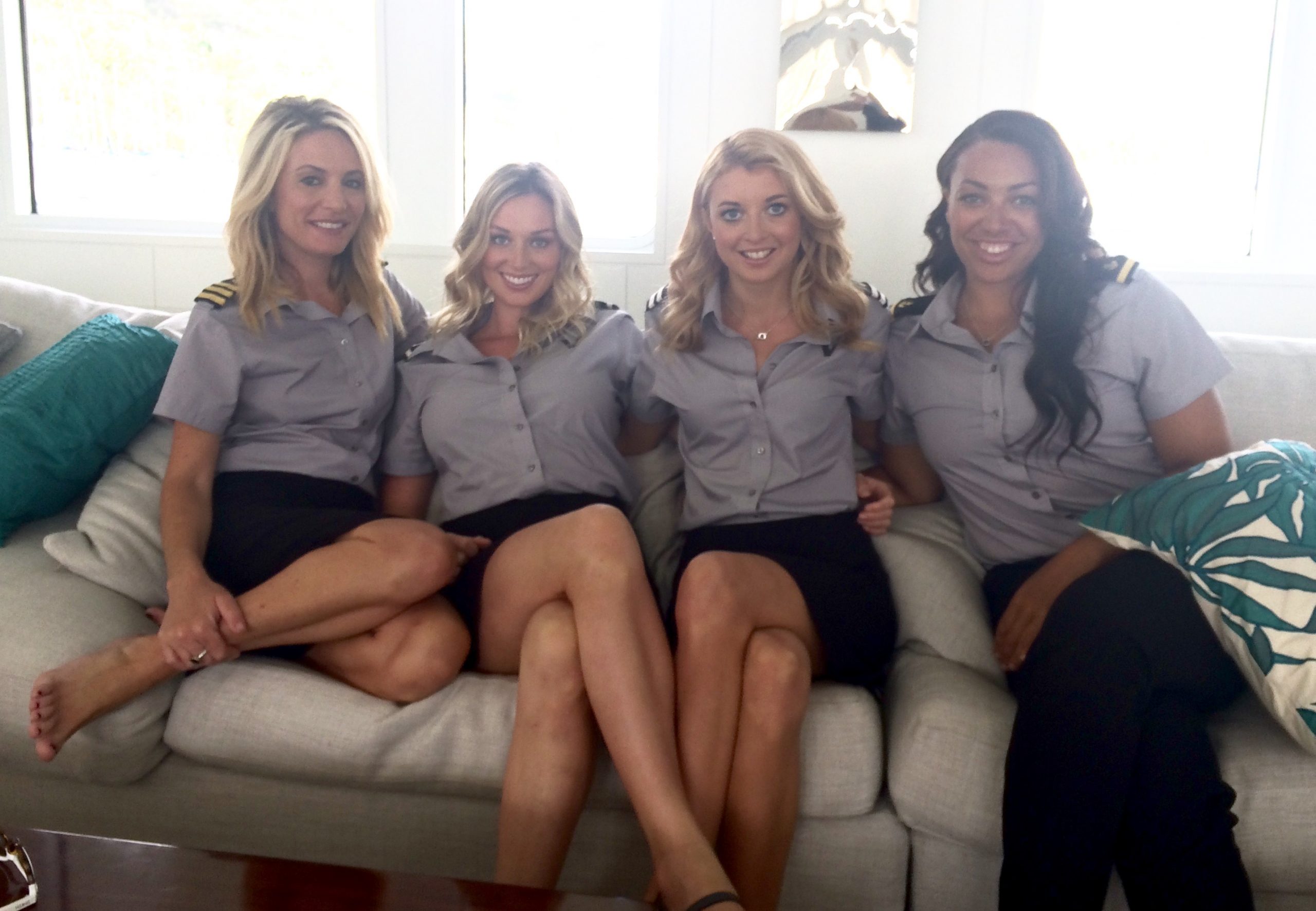I’m being contacted about how to get into yachting by so many of you with the boom of Below Deck in the UK so I thought that I would share the information that I originally posted a few years ago. Here you can find everything you need to know about how to get into the industry, what to expect while working in yachting; along with some resources, insights and advice about life onboard.
Enjoy and good luck, Emily xx
Getting into yachting

Making the step to start your career in yachting is daunting but super exciting! It will be unlike anything that you’ve done before and while I would recommend not getting too enticed by the sun, sea and sand (because it is incredibly hard work) it is heaps of fun and there are so many new things you will experience, learn and see!
Tip: Be serious about this decision…
Getting into the industry is an investment in itself (although you earn your money back very quickly as soon as you land yourself a job). Some things to note to help make your decision:
You have to be very hands on, love team work and hard work. Hours are long and the work is demanding.
You don’t get a lot of alone time and you share quite confined living spaces with other adults, which isn’t always the easiest under stressful conditions when you get tired after weeks of work.
You can’t just nip home and make commitments to friends and family, you have to remain on board and in the locality of the vessel if employed, until your leave dates.

Step 1: Certifications and qualifications
The essentials:
- STCW100 Safety Training & Proficiency in Security Awareness – essential for everyone
- ENG 1 Medical assessment – essential for everyone
- Powerboat Level 2 – essential for a deck position, beneficial for an interior position
- Level 2 Food Health & Safety – essential for an interior position
- Interior training courses – Wine, silver service, admin – beneficial to strengthen interior positions
- Helpful links: UKSA | Seascope | Powerboat training
- ENG 1 Medical Assessment: MCA Doctors UK
- L2 Food safety and hygiene course: Online here
- Superyacht interior training: Explore here.
Once the first two steps above are completed you are now legally eligible to work on a vessel, yay!
Step 2: Build your CV
Here are some guidelines for building your CV:
- Start a completely new CV for yachting
- Don’t make it over 1 page long if starting out
- Only include relevant work experience. If you babysat and loved waterskiing and diving when you were 16 but since graduated and worked as a lawyer, the babysitting and water-sports is far more relevant than having been a lawyer.
- Your CV photo should be a clear headshot wearing a shirt or polo, smiling and with your hair up.
- Include: Name, Position, Current location, Birthdate, contact number / email, Health (smoker / tattoos), Nationality, Marital status, Dress size, Languages, Passport / Visas, a personal profile, qualifications and education (relevant) – then add any yachting experience and day work below this
Step 3: Sign up to Agencies
- Lots of people only start signing up to agencies once you fly out to your start location. I would suggest getting ahead of the game as you’ll be busy enough meeting with the agencies, dock walking and adapting your CV to meet with each agencies requirements and look when you’re out there (they can be very particular).
Prep for signing up to the agencies:
- Take some smart full length images of yourself in a polo or shirt and chinos / nice trousers with your hair up.
- Scan in your new certificates, passport and any other qualifications or awards you may have (diving, massage, silver service, interior training etc). You will have to upload these onto your profile with each agency-it’s time consuming but has to be done.
Here is a list of some agencies to sign up to:
Mediterranean Agencies (Antibes, Cannes & Monaco):
America Agencies (Fort Lauderdale & Miami):
- Crew Unlimited
- Crew Solutions
- Y.CO
- Luxury Yacht Group
- The Crew network Worldwide
- Elite Crew International
- Crew4Crew
- Nautic CrewInternational
Step 4: Booking Flights & Accommodation
- Its all becoming very real now! I made the mistake of not booking a crew house in time when I flew out to Antibes, so I struggled finding somewhere to stay before I found a job. People looking for crew jobs stay in crewhouses, these are like hostels for yachties. They range in price and standards but they’re good fun (for a short while). Get your bed booked before you fly out though, they book up!
- Book your flight, pack your bag (remember you’re going to live on a boat, space is sparse and you wear your uniform A LOT, though you will still want beach ware and some clothes to go out in so pack wisely but lightly). The Med season starts in April and the US/Caribbean season starts in September so book your flights and plan to go out around these times to get a job, competition increases the later into each month as the beginning of the season heats up … jfyi…
Mediterranean Crew Houses:
America Crew Houses (Fort Lauderdale):
Some tips to take onboard with you
When you start out in the yachting industry as a “greenie”, or even witness a conversation about yachting you can very easily feel like you’re listening to a foreign language, never mind when you first move onboard and there’s a whole host of things to learn.
Here are some things to note when starting onboard.
A Crew tree for a boat of around 45/50 mt (160 ft)

Seasickness
For crew and guests alike the thought of experiencing seasickness is horrific. When you start on a new boat it’s a very common question and you should NEVER lie, it’s okay to get seasick, some of the best chief stewardesses and first officers I have worked with have, though you have to know how to manage it. As you adjust to a boat and get used to its movement you will also accustom to it and won’t get so seasick. Here are some tricks that I picked up along the way to prevent & help it!
- Eat something plain and slightly filling before the boats gets moving – you may lose your appetite or be too busy working later and being hungry can make seasickness worse, think only having liquid slushing around in your tummy ☹
- Avoid acidic and fizzy drinks.
- Keep busy and moving but above deck, it’s the worst thing ever to be hovering or ironing in a hot room, though if this is a necessity then brave through it, and carry a ziplock bag with you in case.
- Try and get frequent fresh air and horizon views.
- Ginger time, tea, biscuits, raw, sweeties. Its anti nausea and settles the stomach, and it works.
Sharing small spaces
Sharing tiny cabin spaces with up to 2 other full grown adults can be tricky, especially if you haven’t lived in such conditions before. The only way to it is to suss out each others routines and create a flowing system.
- Give each other space and be tidy and respectful
- Get over body fears – you’ll be brushing your teeth while one of you is showering in no time.
- Don’t be too loud
- Care for each other, listen and be understanding. Your roomies are now your family. All of my previous cabin mates are extremely close friends now.
To check when starting on a new boat
When you’re new onboard make sure you get to grips with how things run onboard to stay on the right side of everyone as much as possible!….find out:
- Who sits where
- Personal food items
- Laundry system
- Greeting the Captain
- Wifi usage
- Door codes
- Locking of doors
- Watch duties
- Crew clean up
- Provisioning protocol
- What the hierarchy is like on the boat
How to keep your zen and stay well
Small spaces, lots of people under your feet, no privacy and over-tiredness makes Below Deck a very risky place for anger, short tempers and chaos. This is when things go wrong. I’ve seen a lot of this and my advice is to be the calm in the chaos, rise above it!
- Breathe
- Rescue remedy, my saviour
- Stretch, yoga, work out and sleep on your break. Whatever your release is, do it. Also listen to your body as being on charter is exhausting.
 Some typical Boat Terms and yachtie phrases
Some typical Boat Terms and yachtie phrases
Starting out in the industry you have to learn a load of new terminology & phrases (quickly). Lots of words stay the same, though many don’t; your crew is made up of Brits, Aussies, Kiwis, Americans, Saffas and other nationalities, we’re basically speaking multi lingual yachting lingo.
Terms to know
- Greenie – Industry newbies (first job on a boat)
- Port & Stbd – Left & Right (it’s harder to figure this out then you’re on a boat, I always get confused)
- Stern – The boats bottom
- Bridge / Wheelhouse – The room in which the Capatin drive the boat from
- A watch – A boat can never ben left un manned, so crew take it in turns to be on “watch”. While on watch you will check visuals, lock doors, take down the flag (ensign) and watch the cameras from the crew mess.
- Galley – The boats kitchen , where the chef works their magic ☺
- Pantry – The stewardess area. If you’re on service you practically live in the pantry, often the teas, yummy nibbles and some alcohol are kept in here.
- Dayhead – The toilets on the boat
- Swimming platform – The lower decking at the stern of the boat where the tenders (the smaller boats held on the yacht) are tied when in use using rope around bollards.
- Laura Star – A stewardess way of life. One of the main iron brands used on yachts, a stewardess tool.
- Meeting Neptune – When yachts cross the Atlantic crew that have not done this before will “meet Neptune”. I’ve experienced it first hand. Think slop buckets, old food and dead fish. I was physically sick, good luck.






Comments 3
I loved everything ❤️ thank you!
Awesome and helpful advice, thank you SO much for taking the time….
Thank you so much, this really has been a huge help.